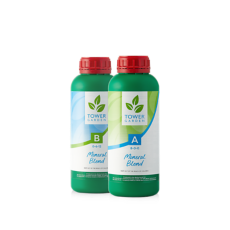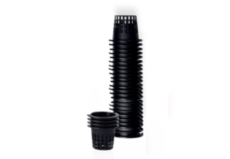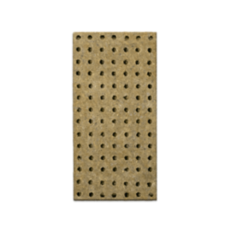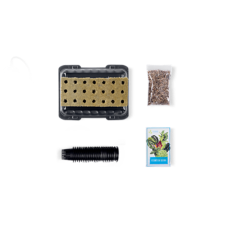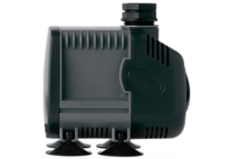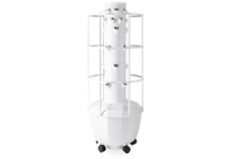Growing Fruiting Plants Indoors
?wid=920&_ck=1666008090516)
Plump, flavourful homegrown tomatoes fresh off the vine in December — sounds pretty amazing, but is it possible? With an indoor Tower Garden it is, if you’re up for the challenge!
If you’ve done much research (or experimentation), you may know that fruiting crops don’t always fare well indoors, certainly not as well as herbs and leafy greens. That said, if you’re determined, that mythical winter tomato is possible.
Let’s explore three keys to successfully growing productive fruiting crops indoors.
1. Pick Suitable Plants
To save yourself from headaches, carefully evaluate the traits of the plants you want to grow. Then select only those that your indoor environment can support.
For example, if you try to grow a vining cucumber plant indoors, you’re likely setting yourself up for failure from the start. Most homes simply cannot accommodate the crop’s invasive, sprawling growth habits.
Size is important. Many fruiting plants come in dwarf or mini varieties. But it’s not the only factor you should consider.
Here are a few general guidelines for picking fruiting crop varieties.
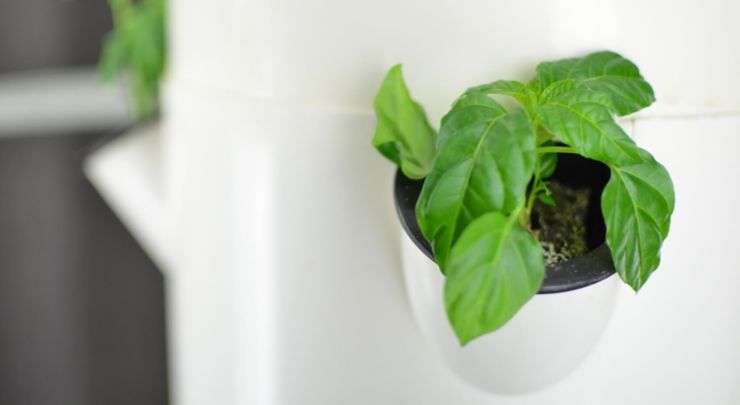
Tomatoes
Depending on the variety, tomatoes are either determinate, which means they grow to a certain point and stop, or indeterminate, which means they grow in a vining fashion, expanding indefinitely.
Knowing this information, you might assume determinate tomatoes are best for indoor environments, where space is limited. But once determinate varieties reach their full, mature stage, they usually produce one big round of tomatoes — which all ripen at once — and then stop producing.
Indeterminate varieties, on the other hand, will keep producing all winter long. But they also require a lot more attention, like some serious pruning.
Regardless of which type of tomato you grow, stick with varieties that yield smaller fruit (e.g., cherry tomatoes). Beefsteak and other big slicing varieties are more challenging indoors.
Beans
Bush beans — which, as you might expect, grow in a bush-like fashion — are the best type to grow indoors. Pole beans, the vining type, are much more unwieldy.
Peas tend to grow well indoors, too. But bush pea varieties are really just tame vines. So if you want to grow them, be prepared to deal with that.
Peppers
Many hot (and some sweet) chilli pepper varieties grow in a compact fashion. If you don’t choose small varieties, your peppers can grow beyond your Tower Garden grow lights.
Strawberries
Strawberries don’t take up much room. This trait alone makes them well suited for indoor environments.
There are a few different kinds of strawberries you can grow. A favourite among Tower Gardeners is the small, super-sweet alpine strawberry.
Other crops
Technically, there are bush varieties of squash and cucumbers, bred specifically for indoor growing. But they may still grow large and can be cumbersome indoors, so be prepared for extra challenges if you attempt those crops.
2. Use LED Indoor Grow Lights
Plants need a lot of light. That’s the reality for any food crop, and it’s doubly true when it comes to fruiting plants.
Without adequate light, these plants simply won’t yield flowers or fruit. That’s why successful indoor gardeners use LED Indoor Grow Lights. Even if you have a big south or west-facing window, you’ll likely still need grow lights for maximum productivity.
Fortunately, Tower Garden offers LED Indoor Grow Lights, even if you already own a Tower Garden sans light and want to grow indoors, you can purchase separately and add LED Indoor Grow Lights to your Tower at any time.
3. Tend to Your Garden
If you’ve picked the right plants and you’re using LED Indoor Grow Lights, your indoor garden should flourish. All that’s left is a little routine maintenance.
Use a Fan
Aiming a small fan at your Tower Garden will help improve airflow around your plants, reducing the risk of mildew, leaf fungi, and other plant problems. It may also facilitate pollination (but you’ll probably still need to help with that — see below).
Prune
Indoors, you’ll want to prune early and often. Pruning promotes healthy plant growth and, by improving air circulation, discourages plant diseases.
But most importantly, pruning prevents your more enthusiastic plants (e.g., tomatoes, peas) from overtaking your indoor space or extending past the range of your grow lights. Speaking of which, be sure to cut your plants back from the grow lights — leaves that touch the bulbs will burn.
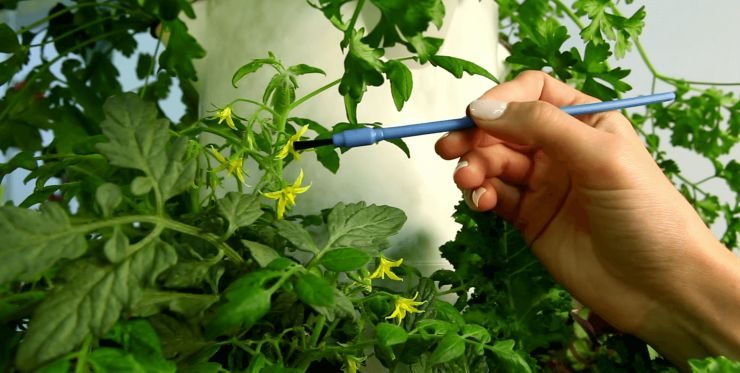
Hand Pollinate
Growing fruiting crops indoors is more tedious and time-consuming than growing them outside, largely because of pollination. Since your home (hopefully!) doesn’t have many bees buzzing around inside, you must play the pollinator if you want to actually harvest any of these crops.
Hand pollination is pretty straightforward. Most of the fruiting plants you might grow indoors are self-fertile, meaning a single flower contains all the necessary parts to produce fruit. So all you really need to do is shake those parts up.
The easiest, fastest way to do this is with the help of an electric toothbrush (ideally one you haven’t cleaned your teeth with). Simply activate the toothbrush, and vibrate the back of each flower for a few seconds. If you don’t have an electric toothbrush, a cotton swab or small paintbrush will work — just touch the inside of each flower to move the pollen around.
If you’re growing plants with separate male and female flowers, you can either (1) swab the inside of the male flower with a paintbrush or cotton swab, and then swab the inside of the female flower to transfer the pollen, or (2) pick a male bloom, peel off its petals, and lightly dust pollen onto the pistils of the females with the male stamen.
With either self-fertile or male and female flowering plants, hand pollinate open flowers daily for best results.
Don’t Forget, You've Got This!
Even if you do everything correctly, your fruiting crops most likely won't be as productive inside as they would be outside - they're plants, they like their natural habit best. However, if you follow this advice and set realistic expectations, you may see (and be proud of) a humble harvest.


